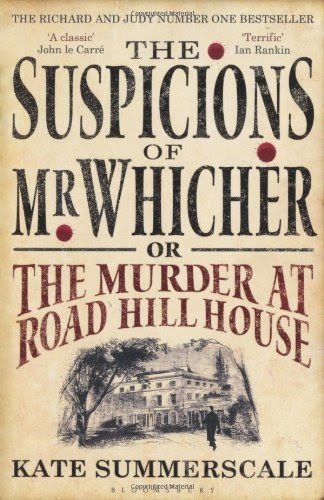 Here at the library, we know it to be true that readers are fascinated by crime, crime both fictional and real.
The Invention of Murder: how the Victorians reveled in death and detection and created modern crime by Judith Flanders explores how murder and crime became a spectacle for Victorians. Flanders is of the opinion that a more literate society contributed towards this fascination with crime, and newspapers fed the addiction with reams of salacious details. Flanders relates many grisly tales, solved and unsolved including the case of Mrs. Manning, who along with her husband, murdered her lover with a coal shovel. Mr and Mrs Manning were hung together, she in a fancy black dress. The public was so fascinated with the case, her likeness spent more that a hundred years on display at Madame Tussauds.
Here at the library, we know it to be true that readers are fascinated by crime, crime both fictional and real.
The Invention of Murder: how the Victorians reveled in death and detection and created modern crime by Judith Flanders explores how murder and crime became a spectacle for Victorians. Flanders is of the opinion that a more literate society contributed towards this fascination with crime, and newspapers fed the addiction with reams of salacious details. Flanders relates many grisly tales, solved and unsolved including the case of Mrs. Manning, who along with her husband, murdered her lover with a coal shovel. Mr and Mrs Manning were hung together, she in a fancy black dress. The public was so fascinated with the case, her likeness spent more that a hundred years on display at Madame Tussauds. Flanders explored another crime, the Ratcliffe Highway Murders, in which two unconnected families in the East End of London were brutally bludgeoned. English essayist Thomas de Quincey wrote about this crime and centuries later became the focus of David Morrell's Murder as a Fine Art. In this novel family if horribly murdered and a police detective remembers 50 years back to 1811 and the Ratcliffe Highway Murders. As the circumstances are so close to original murder, general panic ensues as another is expected to follow. De Quincey, now elderly, is looked upon with suspicion by the police as his original essays seem to glorify the crime and encourage a copycat.
Flanders explored another crime, the Ratcliffe Highway Murders, in which two unconnected families in the East End of London were brutally bludgeoned. English essayist Thomas de Quincey wrote about this crime and centuries later became the focus of David Morrell's Murder as a Fine Art. In this novel family if horribly murdered and a police detective remembers 50 years back to 1811 and the Ratcliffe Highway Murders. As the circumstances are so close to original murder, general panic ensues as another is expected to follow. De Quincey, now elderly, is looked upon with suspicion by the police as his original essays seem to glorify the crime and encourage a copycat.Another particularly brutal murder outlined by Flanders is that of the toddler Francis Saville Kent who had his throat cut and was found tossed in the privy. Kate Summerscale in The Suspicions of Mr. Whicher, explores the crime through the lead detective Jonathan Whicher, who took on the case when others proved unable to solve it. It took five years and ultimately sacrificing his career before the guilty party was convicted. Whicher is said to be the person Wilkie Collins based his detective, Sargeant Cuff, on in The Moonstone.
 |
 |
 I just finished reading one of my favourite Victorian Detectives, William and Hestor Monk in their latest outing, Blood On the Water by Anne
Perry, Monk investigates the explosion of the pleasure boat Princess
Mary. Monk, as Commander of the River Police, witnesses the horrific
explosion during his patrol and is fully engaged in the rescue and
recovery operation. With breathtaking speed the investigation is taken
away from the River Police and assumed by the Metropolitan Police. An
Egyptian man is quickly arrested and found guilty of the crime making
Monk suspicious that there might be a connection with the newly opened
Suez Canal. Monk has help as always from his most capable wife Hestor,
his lawyer friend Rathbone and his befriended urchin Scuff.
I just finished reading one of my favourite Victorian Detectives, William and Hestor Monk in their latest outing, Blood On the Water by Anne
Perry, Monk investigates the explosion of the pleasure boat Princess
Mary. Monk, as Commander of the River Police, witnesses the horrific
explosion during his patrol and is fully engaged in the rescue and
recovery operation. With breathtaking speed the investigation is taken
away from the River Police and assumed by the Metropolitan Police. An
Egyptian man is quickly arrested and found guilty of the crime making
Monk suspicious that there might be a connection with the newly opened
Suez Canal. Monk has help as always from his most capable wife Hestor,
his lawyer friend Rathbone and his befriended urchin Scuff.







No comments:
Post a Comment